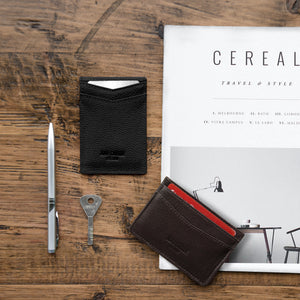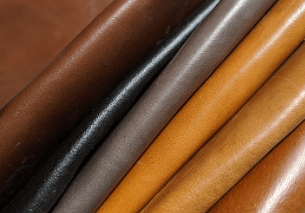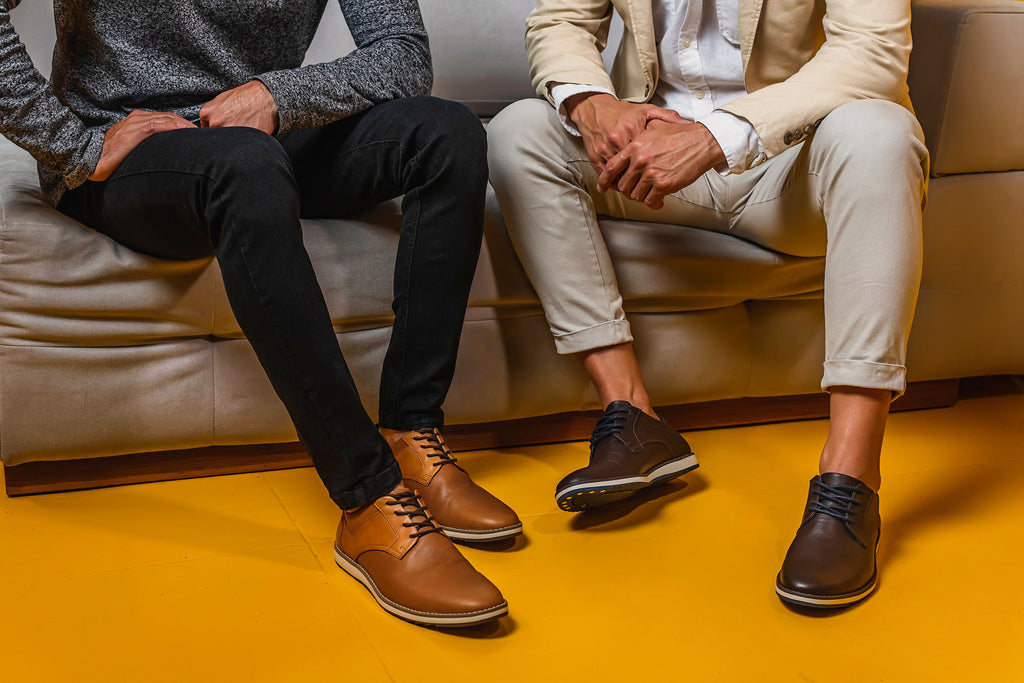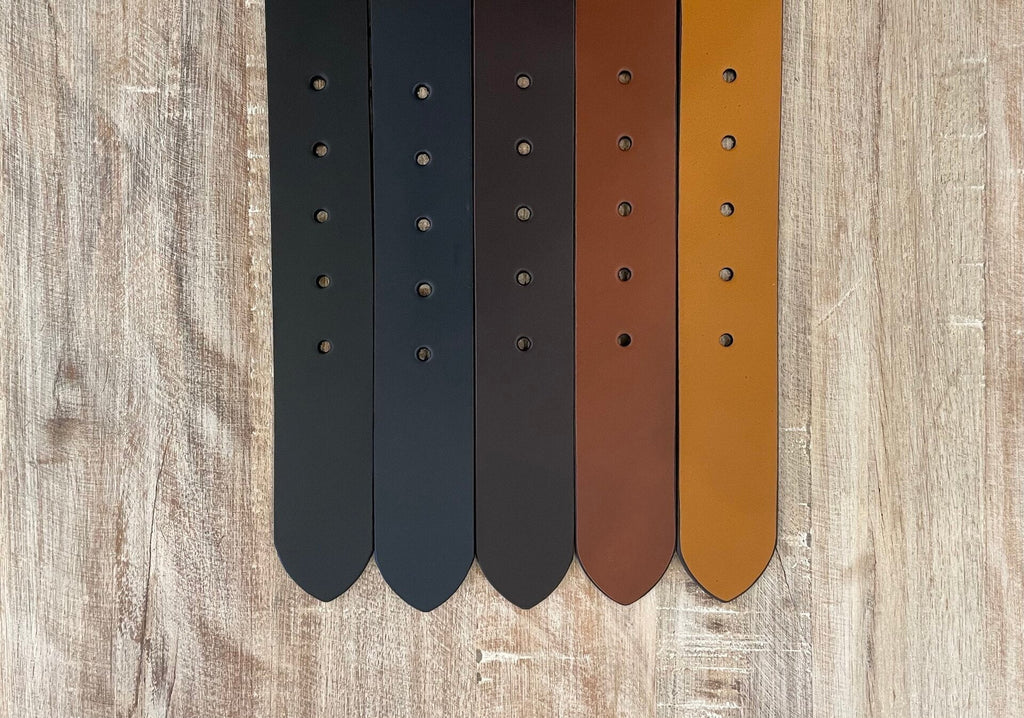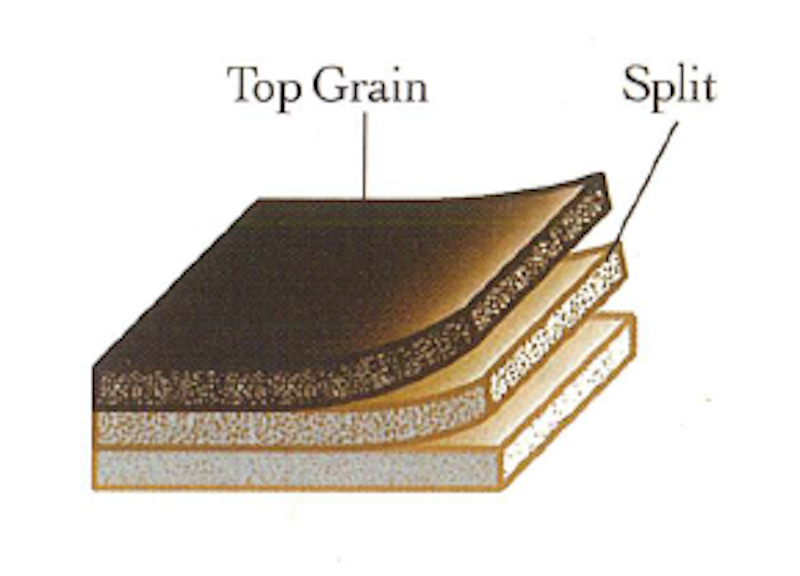
Top-Grain Leather vs. Split-Grain Leather
Leather can vary greatly depending on how it is processed, and understanding these differences is key to making an informed choice when buying leather products. Today, we’re comparing top grain leather and split grain leather—two types that serve different purposes, each with unique benefits. This guide will help you understand their characteristics, uses, and which one might be best for your needs.
What is Top Grain Leather?
Top grain leather is made from the upper part of a cowhide after it has been treated and sanded to remove imperfections, resulting in a uniform and smooth surface. This process gives it a more polished appearance compared to the rugged, natural look of full grain leather, which retains all of the hide’s natural markings.
Top grain leather strikes a balance between quality and practicality. It is durable yet flexible, allowing for a variety of finishes and colors to be applied. This makes it a popular choice for upholstered furniture, handbags, and wallets. The surface treatments enhance its resilience against stains and scratches while maintaining a sleek aesthetic. Top grain leather is often described as the “workhorse” of leathers—tough, yet adaptable to different styles.
What is Split Grain Leather?
Split grain leather comes from the lower layers of the hide after the top grain has been removed. Without the natural grain, it lacks the toughness of top grain leather and is generally softer. However, it is often textured or coated to give it a look similar to natural grain leather, albeit without the same durability.
Split grain is typically used for products that require a soft, suede-like feel or where cost-efficiency is important, such as in lower-cost leather furniture or suede goods. Because it lacks the strength of the top layer, it is less durable and more prone to wear and tear. Nonetheless, split grain can provide a unique aesthetic appeal—particularly for those who love the soft, textured feel of suede.
Top Grain vs. Split Grain: Key Differences
The main difference between top grain and split grain leather comes down to durability, appearance, and intended use. Top grain leather, being the uppermost layer, is sturdier, with a refined and uniform surface. It’s well-suited for items like bags, wallets, and high-end furniture, where longevity and a polished look are desired.
Split grain leather, on the other hand, is softer but lacks the natural grain. It works well for suede products, but because it is the lower portion of the hide, it is less durable. Split grain is ideal if you are looking for a budget-friendly leather that offers a different texture, such as suede shoes or accents in home decor.
- Durability: Top grain leather is much more resistant to wear, making it ideal for products that need to withstand frequent use.
- Texture and Appearance: Top grain is smooth and polished, often described as similar to well-finished wood. Split grain, by contrast, is soft and textured, with a suede-like quality.
- Applications: Top grain leather is popular for luxury items, while split grain is often seen in suede footwear and cost-effective furniture options.
Which One Should You Choose?
When choosing between top grain and split grain leather, it really comes down to your specific needs. If you’re seeking something durable with a refined appearance, top grain leather is a great choice. It offers resilience, versatility in finishes, and is perfect for items that see heavy use. On the other hand, if you prefer the soft, textured feel of suede and don’t require as much durability, split grain might be the better fit—especially for those who value the aesthetic of soft, suede-like finishes.
Care and Maintenance Tips
To maintain top grain leather, it’s best to clean it regularly using a soft cloth and apply leather conditioner to keep it supple. This type of leather is resilient but still benefits from occasional maintenance to preserve its luster and prevent cracking.
For split grain leather, especially when it’s used as suede, a specialized suede brush should be used to clean and maintain its texture. Avoid excessive moisture, as it can easily stain split grain leather, meaning you’ll need to handle it with care.
Top Grain vs. Split Grain: Choosing the Right Leather for Your Needs
Both top grain and split grain leather have unique benefits, and the choice ultimately depends on what you need. Whether it’s the versatility and durability of top grain or the soft texture of split grain, understanding these differences can help you make the best decision for your next leather purchase.
- Choosing a selection results in a full page refresh.
- Press the space key then arrow keys to make a selection.

